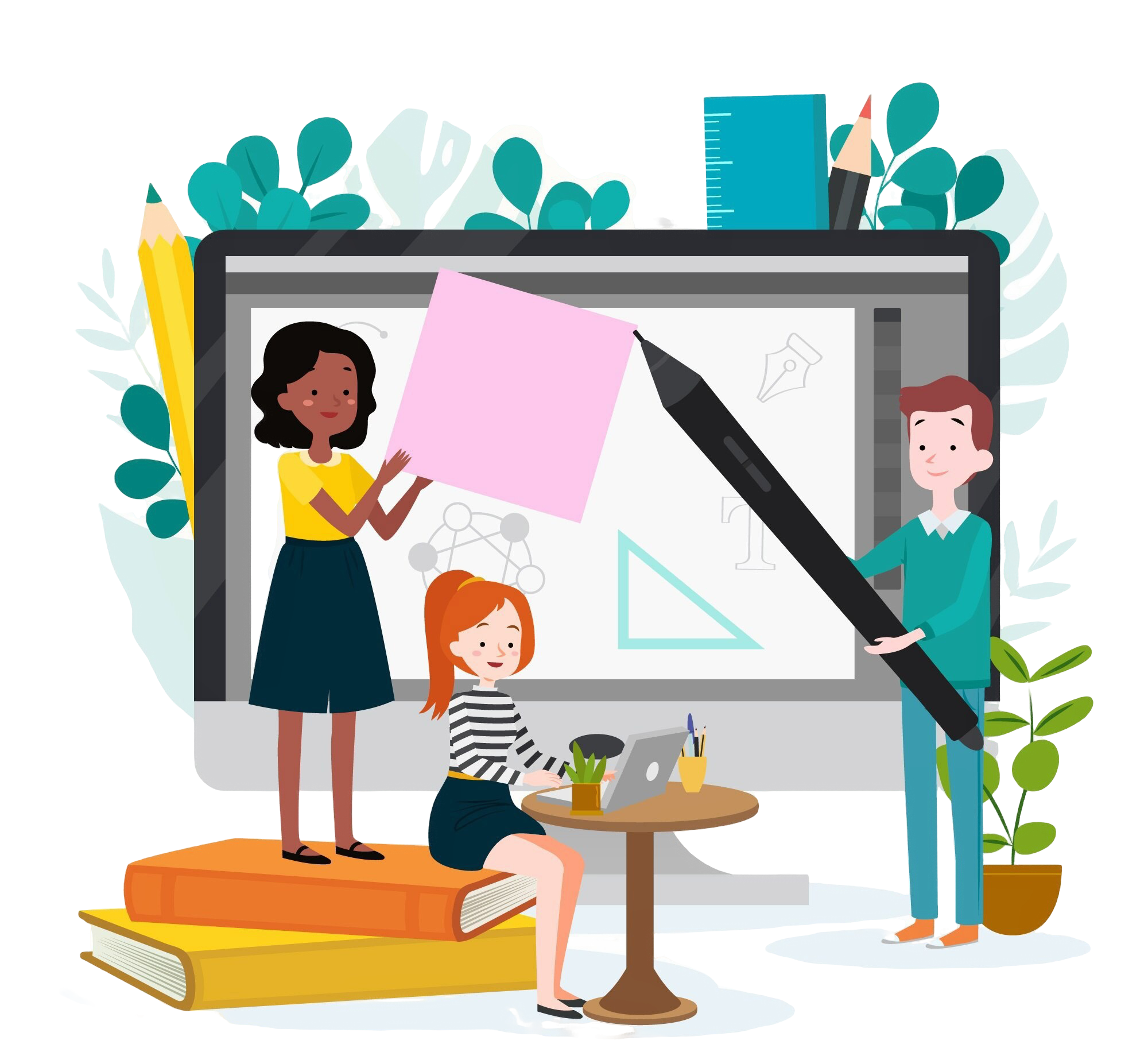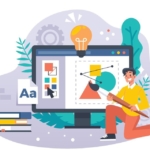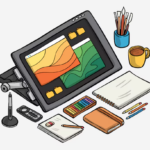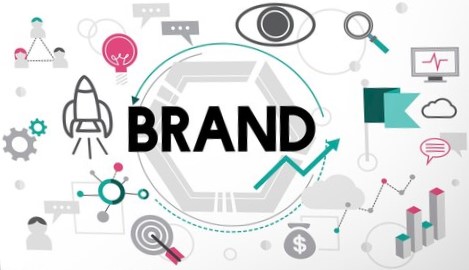Graphic design is everywhere—from the logos of your favorite brands to the packaging of the products you buy and the websites you visit daily. For businesses, graphic design is a powerful tool for communication and branding, but for beginners, the field can seem overwhelming. Here’s a beginner-friendly guide to understanding the basics of graphic design.

- What is Graphic Design?
 Graphic design is the art and practice of creating visual content to communicate messages. It combines creativity with technical tools to deliver aesthetically pleasing and functional designs. Whether it’s a business card or a billboard, graphic design influences how people perceive and interact with information.
Graphic design is the art and practice of creating visual content to communicate messages. It combines creativity with technical tools to deliver aesthetically pleasing and functional designs. Whether it’s a business card or a billboard, graphic design influences how people perceive and interact with information.
- Core Principles of Graphic Design
To create effective designs, it’s essential to understand these key principles:
- Balance: Achieving visual equilibrium in a design through the distribution of elements like text, images, and shapes.
- Symmetrical Balance: Evenly distributed elements.
- Asymmetrical Balance: Unequal but visually appealing arrangements.
- Contrast: Using differences in color, size, or typography to create emphasis and draw attention.
- Alignment: Ensuring elements are visually connected, creating order and organization.
- Repetition: Reinforcing a design’s theme through recurring patterns, shapes, or colors for consistency.
- Hierarchy: Guiding the viewer’s eye by making certain elements stand out (e.g., headlines larger than body text).
- Space: Also known as white space, it refers to the empty areas around elements. Proper use of space enhances readability and design clarity.
- Key Design Elements
Graphic designers use these fundamental elements to create their work:
- Line: Defines boundaries, creates patterns, and leads the viewer’s eye.
- Shape: Basic geometric forms like circles, squares, and triangles or organic shapes used in illustrations and layouts.
- Color: Adds emotion, depth, and emphasis. Understanding color theory is crucial for choosing harmonious palettes.
- Typography: The art of arranging text. Choosing the right font can greatly impact a design’s tone and readability.
- Texture: Adds a tactile appearance, making designs feel more tangible and immersive.
- Graphic Design Tools
Modern graphic design relies on software to bring ideas to life. Popular tools include:
- Adobe Suite: Industry standard tools like Photoshop (image editing), Illustrator (vector graphics), and InDesign (layouts).
- Canva: A beginner-friendly platform for quick and easy designs.
- Figma: A collaborative tool for UI/UX design and prototyping.
- CorelDRAW: Another powerful vector graphic software.
- Types of Graphic Design
Graphic design spans various fields, including:
- Branding Design: Creating logos, business cards, and brand identity materials.
- Web Design: Crafting user-friendly and visually appealing websites.
- Packaging Design: Designing product boxes, labels, and other packaging materials.
- Print Design: Magazines, brochures, flyers, and posters.
- Motion Graphics: Animated visuals for videos and social media.
- Why Graphic Design Matters
 Graphic design isn’t just about aesthetics; it’s a problem-solving tool. It helps businesses communicate effectively, build trust with their audience, and stand out in competitive markets. From conveying professionalism to sparking emotions, great design makes an impact.
Graphic design isn’t just about aesthetics; it’s a problem-solving tool. It helps businesses communicate effectively, build trust with their audience, and stand out in competitive markets. From conveying professionalism to sparking emotions, great design makes an impact.
- Tips for Beginners

- Learn the Basics: Master design principles and tools before tackling complex projects.
- Analyze and Observe: Study successful designs and deconstruct what makes them effective.
- Practice Regularly: Experiment with different styles, techniques, and tools.
- Seek Feedback: Share your work with peers or mentors to improve and grow.
Conclusion
Graphic design is both an art and a science, requiring creativity, technical skills, and an understanding of core principles. Whether you’re looking to start a career in design or simply appreciate the craft, understanding these basics is a great first step.



